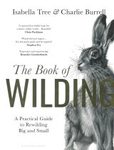Field / Identification Guide Identification Key
By: Stephen Spawls(Author), Kim M Howell(Author), Harald Hinkel(Author), Michele Menegon(Author)
624 pages, 600+ colour photos, colour distribution maps
![Field Guide to East African Reptiles Field Guide to East African Reptiles]()
Click to have a closer look
About this book
Contents
Customer reviews
Biography
Related titles
About this book
East Africa is home to a remarkable assemblage of reptiles, from crocodiles and chameleons to turtles and tortoises, lizards, worm-lizards, and a stunning array of snakes. The region is a true herpetological hot-spot.
This second edition, a fully revised version of the classic field guide to the region's reptiles, explores the full diversity of these animals. With updated text (well over 100 species have had their generic names changes since publication of the first edition), coverage of an additional 60 species, detailed maps and more than 600 new photographs, Field Guide to East African Reptiles includes every one of the 492 species in the region. All are described and mapped, with virtually every species accompanied by at least one colour photograph.
Comprehensive and definitive, Field Guide to East African Reptiles is an essential tool for all naturalists, conservationists, educators, field workers, medical personnel and students in the region.
Contents
Introduction
How to Use this book
East African Reptiles and their Zoogeography
Observing, Gathering Data and Collecting Reptiles
Reptile Conservation
Identifying Reptiles
Some Brief Notes on Reptile Taxonomy
What are Reptiles?
Safety and Reptiles
Acknowledgements
Further Reading, Literature and Resources
Species Accounts
Chelonians
Lizards
Worm Lizards
Crocodiles
Snakes
Appendices
Glossary
Line Drawings
Index
Customer Reviews
Biography
Stephen Spawls went to Kenya when he was four and caught his first chameleon at the age of six. East African herpetology is his major interest, his publications include Field Guide to East African Reptiles and Kenya: A Natural History.
Kim Howell was professor of Zoology at the University of Dar es Salaam for over 40 years, and has lived in and studied the fauna of Tanzania since 1970.
Harald Hinkel is a German naturalist specializing in biodiversity and conservation, who has also worked extensively in disaster relief, particularly in Rwanda.
Michele Menegon is an expert on East African herpetofauna, having spent most of his time since 1997 conducting research across the Eastern Afromontane.
Field / Identification Guide Identification Key
By: Stephen Spawls(Author), Kim M Howell(Author), Harald Hinkel(Author), Michele Menegon(Author)
624 pages, 600+ colour photos, colour distribution maps







































